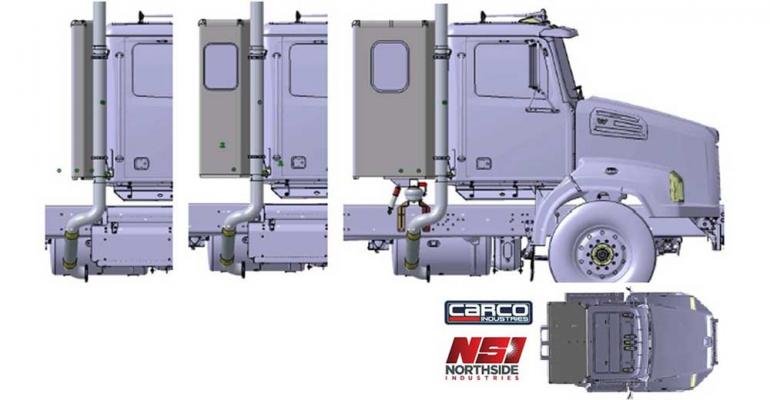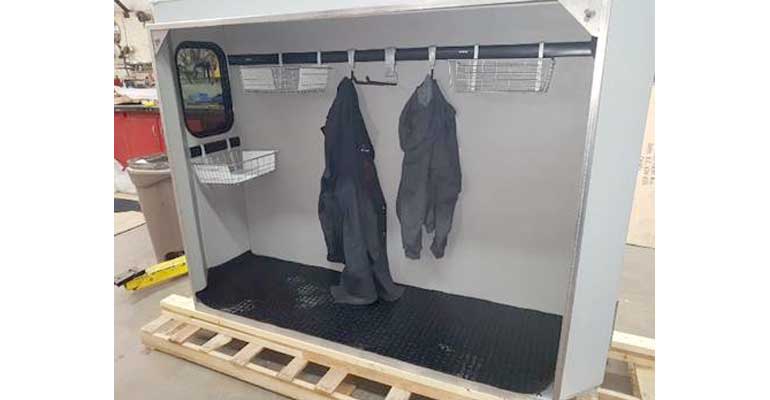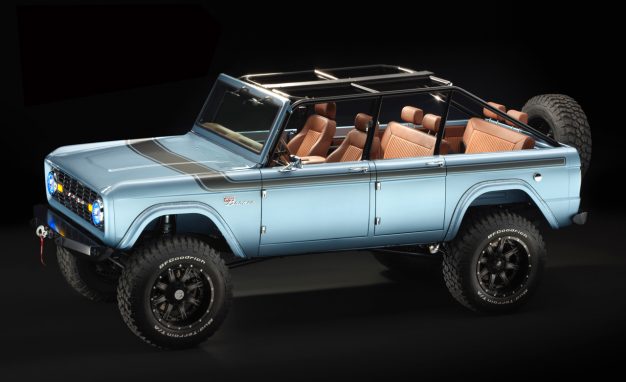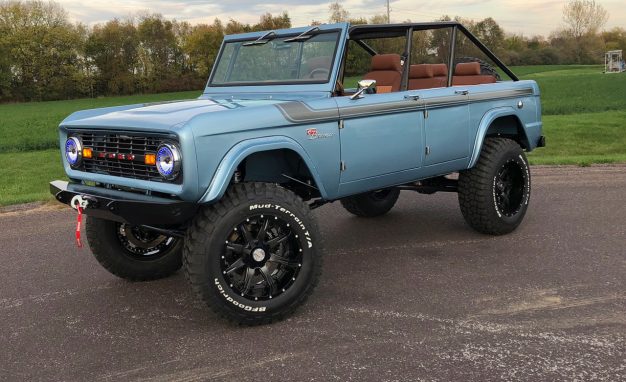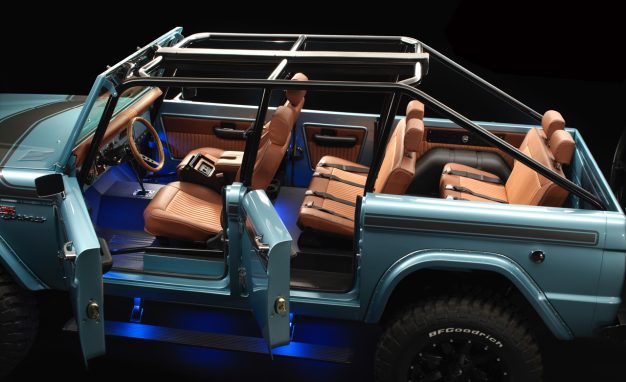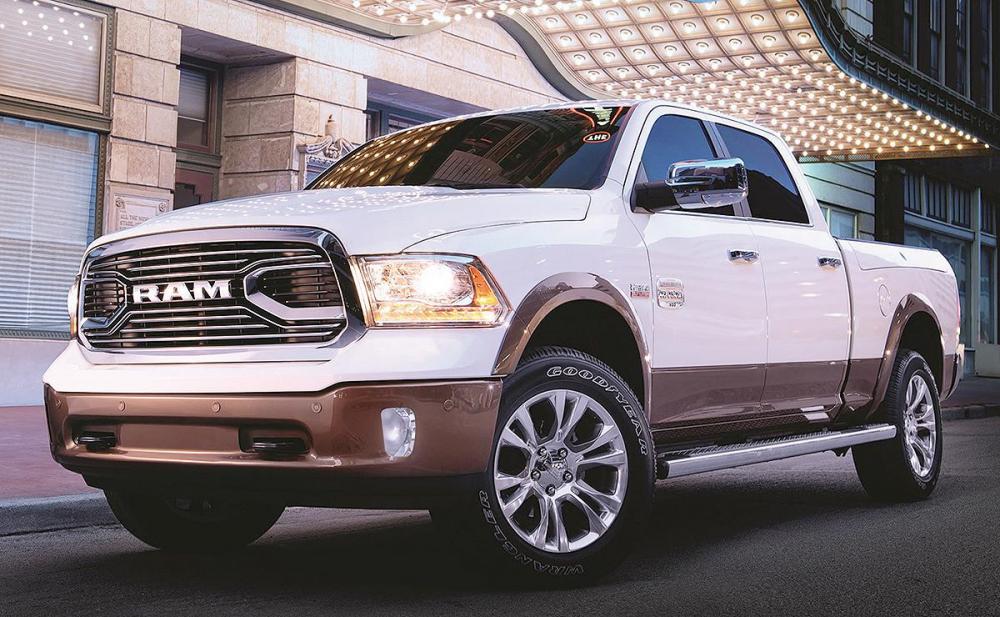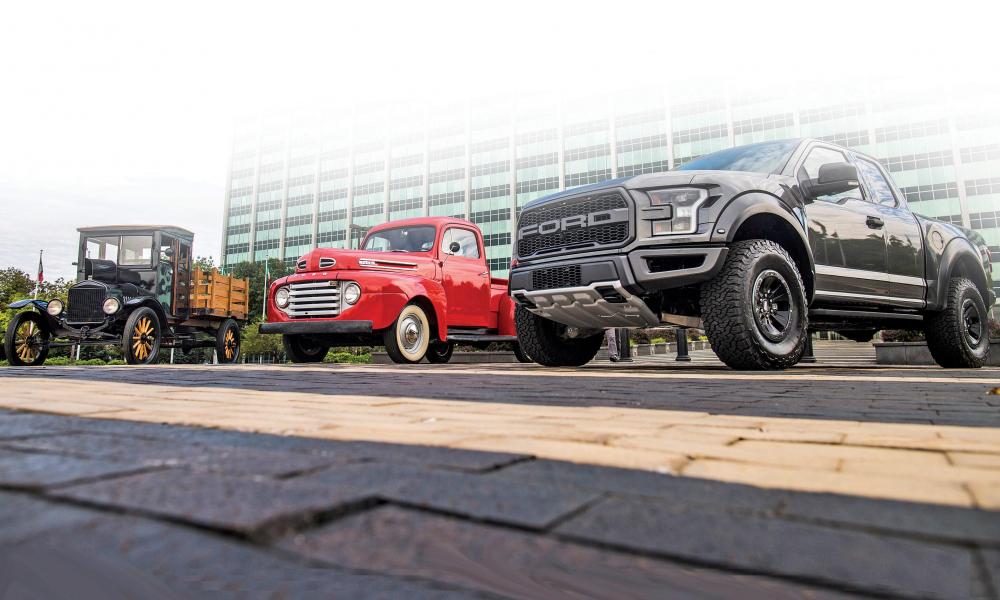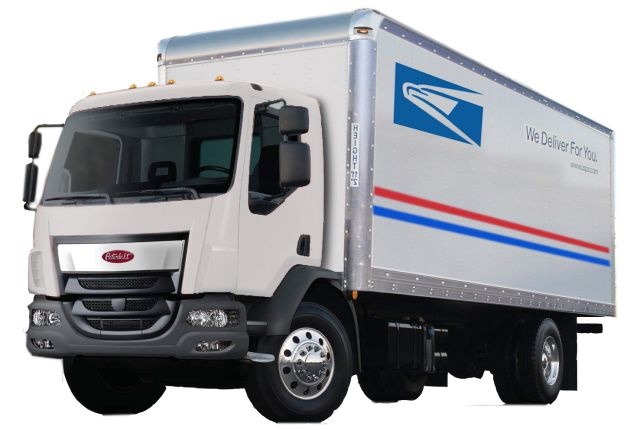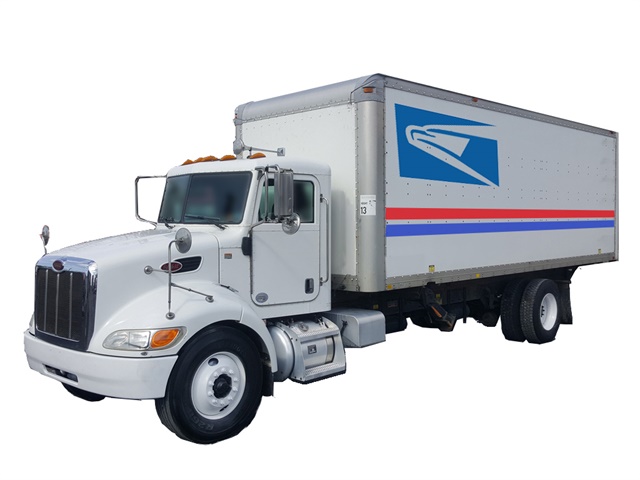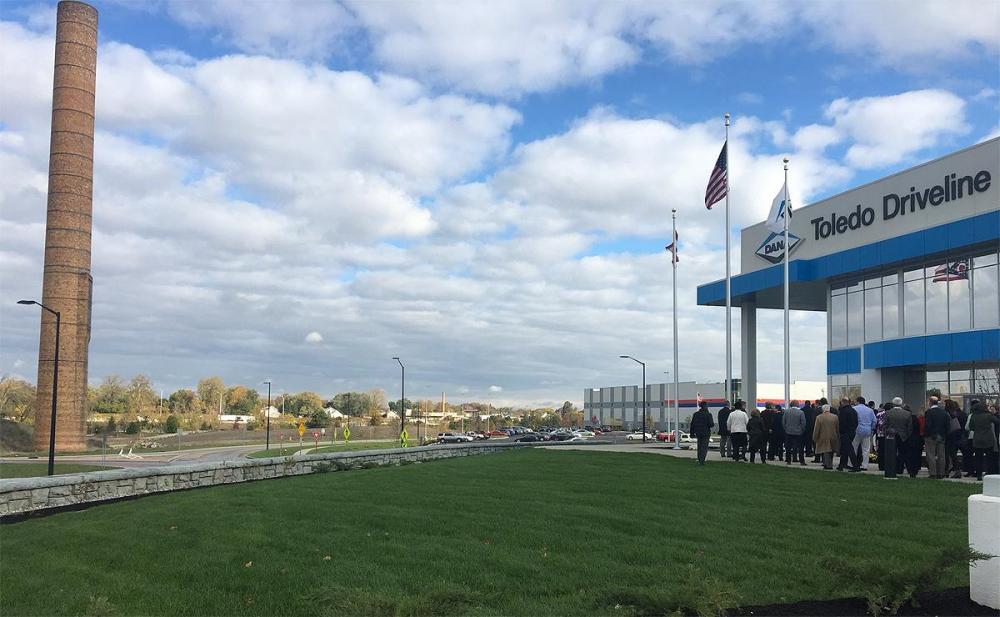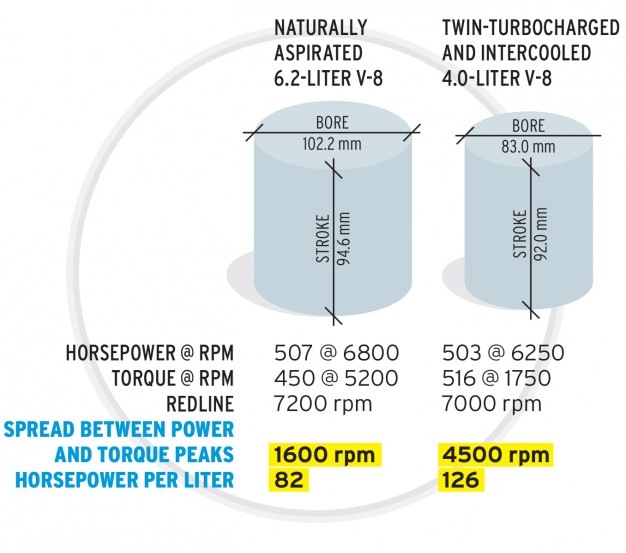
kscarbel2
Moderator-
Posts
18,893 -
Joined
-
Days Won
114
Content Type
Profiles
Forums
Gallery
Events
Blogs
BMT Wiki
Collections
Store
Everything posted by kscarbel2
-
Court Battle Erupts over Truck Trailers and GHG/MPG Rule
kscarbel2 replied to kscarbel2's topic in Trucking News
Phase 2 trailer efficiency regs shelved Jason Cannon, Commercial Carrier Journal (CCJ) / October 27, 2017 A federal appeals court on Friday paused implementing portions of tightened greenhouse gas and fuel economy standards that were set to take effect in January for trailers. The Truck Trailer Manufacturers Association (TTMA) last month requested that the U.S. Federal Court of Appeals in D.C. suspend planned enforcement of EPA Greenhouse Gas Phase 2 (GHG2) with regard to trailers, citing the EPA’s prior agreement that further rule making was needed. Friday, that stay was granted by a three-judge panel. Union of Concerned Scientists (UCS) panned the decision. Michelle Robinson, director of the Clean Vehicles Program for the USC, says GHG2 was set to reduce oil consumption in the U.S. by more than a million barrels every two days, and cut 1.1 billion metric tons of pollution over the lifetime of the trucks covered by the rule. “Making trailers more efficient delivered at least 10 percent of these benefits,” she added through a statement issued by the organization. “Now, the court has sided with trailer manufacturers who don’t want to comply with the rule, and the Trump administration has already signaled its intent to let them off the hook completely by revising the regulations.” In April, TTMA requested the trailer initiative be paused, and questioned the EPA’s authority to regulate trailers under the Clean Air Act sine the act only covers “self-propelled vehicles.” Friday’s decision to grant TTMA’s request for a stay doesn’t permanently scrap Phase 2 with regard to trailer efficiency. The EPA says it plans to reevaluate its trailer provisions through public comment and rule-making, which is likely to carry over into next year. -
Kevin Jones, Trailer-Body Builders / October 27, 2017 WINDSOR, ON. Recognizing that vocational truck users need crew cab space, but not necessarily more space for crew, Western Star will soon introduce a cab extension package that allows customers multiple options on the amount of room behind the front seats and, more importantly, the freedom to configure that extra room as they see fit. John Tomlinson, XD and vocational sales manager for Western Star, provided Trailer/Body Builders with an exclusive preview of the IronFeather 24” Back Pack Cab Extension System this week at the Canadian Transportation Equipment Association Technology Conference here. Essentially, the back pack system is a variation of the Western Star extended cab crew cab, introduced earlier this year. “The more I talked to customers, the more I found that many of them actually don’t use the crew and extended cabs for a crew seating, they use it for storage—but it’s the only thing they could get,” Tomlinson said. “So we took that and went back to the drawing table: Why don’t we just design something for storage?” Indeed, Tomlinson tells of simply walking outside his home where utility workers had parked a truck equipped with a crew cab. He asked if he could look inside, and found the seating area covered with gear—tools, jackets, notebooks. And he also tells of vocational customers who have fabricated their own work-arounds—though these perhaps were not up to OEM engineering standards. So, in keeping with Western Star’s recent innovation push to leverage its unique market position as a small, premium brand backed by Daimler, the world’s largest truck manufacturer, the company worked with Northside Industries (NSI) on a factory-built solution. The system will be presented formally at the NTEA Work Truck Show next March. “It was pretty easy for Western Star. We have an open-back cab, so all of our sleepers use a socket,” Tomlinson said. “We worked with the people that developed our crew cab, NSI, to develop this Back Pack system that uses our socket mounting. It snaps on right at the factory; we get CARCO to do the install.” While a 12-in. storage extension and the full crew cab have been announced, the new Back Pack will be available in 12-in. and 24-in. configurations, or with a 36-in. extension that can be equipped as a rest cab sleeper, with a 3-person certified bench seat, or even with a work table. Among the marketing bullet points: • The extremely light weight storage units are fully customizable • Clean design allows users to fabricate custom interiors; and • The extension can be set up for light loads or heavy loads using rear chassis mounting. The absence of a crew cab had kept Western Star “out of a lot markets,” Tomlinson noted, but customers have insisted the brand would be “in” with the option. And now Western Star has upped the ante: The IronFeather Crew Cab and the Back Pack extension are available with all Models including the big bore Detroit DD16 and Cummins ISX engine offerings. More to come in the spring.
-
Car & Driver / October 27, 2017 Ford has confirmed that it’s bringing back the Bronco as a four-door SUV for 2020, but one customizer of vintage trucks thought, “Why wait?” The result is this first-generation Bronco made into a four-door and dubbed the Four Horseman. The build is by Maxlider Brothers Customs, a Chicago-area shop that specializes in Broncos. Starting with a ’66 truck, the team, led by brothers Erik and Kris Barnlund, lengthened the chassis by 26 inches. A supercharged 5.0-liter Coyote V-8 from Roush Performance supplies the power—600 horses’ worth; four-wheel disc brakes by Wilwood keep a leash on the big brute. Naturally, the Bronco is four-wheel drive; the axles are from Currie Industries, with Yukon Gear & Axle supplying the driveshafts, differentials, and locking hubs. MJR Industries created the custom suspension, which includes Fox Racing shocks. BFGoodrich 37 x 12.5/20 tires wrap 20-by-12.5-inch gloss-black wheels. Power-deploying assist steps help passengers climb aboard. The custom-fabricated interior includes three rows of seats, upholstered in marine performance vinyl, while Wetsounds Bluetooth sound bars and subwoofers help supply the tunes. The four-door Bronco is headed to this year’s SEMA show and will compete in that event’s Battle of the Builders. Will Four Horseman bring doomsday to its rivals? We’ll have to wait and see. .
-
Double shot of Ram in '18 could strike Silverado Larry Vellequette, Automotive News / October 30, 2017 FCA will crank out older 1500s in a bid to bump Chevy Heads-up, Chevy. Ram has a plan, it seems, to knock the Silverado out of the No. 2 spot in the full-size pickup segment in 2018 and cut into sales of the midsize Colorado at the same time. How? By continuing to build the current-generation Ram 1500 — likely backed by attractive discounts — while ramping up production of the redesigned Ram 1500. The new Ram, code-named DT, debuts in January at the Detroit auto show. Production will begin the same month at the retooled Sterling Heights Assembly Plant in suburban Detroit. FCA said last week the move to Sterling Heights will expand Ram 1500 capacity by 60,000 trucks annually over current levels. In addition, CEO Sergio Marchionne revealed that FCA will keep the current Ram 1500, code-named DS, on a single shift at the nearby Warren Truck Assembly Plant through 2018. That means even more trucks on dealership lots next year. "I think this is a brilliant plan," said Ralph Mahalak Jr., who owns six FCA dealerships in Michigan, Ohio and Florida. "We can certainly use more trucks." Costs amortized Warren Truck builds up to 100 DS Ram 1500s per shift, which could push another 25,000 half-ton trucks onto the market in 2018 — with their development and tooling costs fully amortized. "The Ram realignment was always designed to allow for parallel production in Sterling Heights and in Warren," Marchionne told analysts last week as FCA reported third- quarter earnings. "Effectively, when we get the new truck up and running at full scale in Sterling we will bring down capacity to one full shift" in Warren, he said. "That will continue indefinitely as long as we see market needs not being satisfied by the overall production capacity. It's going to be an interesting exercise in 2018 as we run it out." The ramp-up to full production in Sterling Heights should take less than six months. But if dealers and consumers keep buying the DS pickup, Marchionne said FCA will keep making it. "My expectation is that we'll run the old installation — and at least for the whole of 2018," he said. "Production capacity is confirmed, so it's up to us to decide how long we run it." Through September, full-size pickup sales are up 5.2 percent, according to the AutomotiveNewsDataCenter. Ram has closed the gap with the Silverado by about 21,000 trucks compared with last year, and has beaten its crosstown rival in three months in 2017. Ram has never finished ahead of the Silverado for a full year. Lean stocks FCA's inventory of unsold Ram pickups is running lean, as are those of the Ford F series and Silverado. While a 60-day supply is considered ideal for car stocks, automakers have typically considered a 100-day supply appropriate for pickups. That's because of the vast number of models, variants and trims dealers must keep in stock. On Oct. 1, FCA reported 152,000 unsold Ram pickups in inventory, an 84-day supply. Ford reported 240,000 F series trucks in stock, a 76-day supply, and Chevy had 180,000 unsold Silverados, an 85-day supply. An FCA spokesman refused to comment further on the company's 2018 strategy for the Ram pickup lineup and whether the Silverado is being targeted. Dave Sullivan, an analyst with AutoPacific, said FCA's motivation likely has more to do with meeting its aggressive 2018 financial targets than bragging rights. "This is about flexing the profit machine as FCA shows what they are really capable of generating for potential suitors," Sullivan said. "Ram will probably ramp up some lower cost/higher incentivized trucks based on the outgoing model to take on compact pickup prices," Sullivan said, adding that Ram is likely to argue to consumers that they "can get more truck from Ram for the same price as a Colorado," Sullivan said. "Because this [current-generation] truck's tooling is amortized, they can offer discounts on it while reducing incentives for the new model. When production stops in Warren and inventory decreases, the hope will be that Ram can hit the reset button for the new Ram and not have it rely as heavily on discounts." For dealers, anything that brings more Ram 1500s to their lots while pickup sales are hot is welcome news, especially amid a booming construction industry. Mahalak said: "Most dealers, will order the new truck as a high-line vehicle, and the old truck as more of a base offering. "It will increase the number of trucks we're able to offer and the price points as well." .
-
The truck that built Ford Michael Martinez & Richard Truett, Automotive News / October 29, 2017 A century ago, Model TT paved the way for an automotive juggernaut DETROIT — On July 27, 1917, Henry Ford responded to customer demands by introducing a model that fastened an open bed behind the cab of his popular Model T car. He called it the Model TT, and it sold for $600. It may have been his most important business decision since founding the company that bears his name. Today, the success or failure of Ford Motor Co. rests in the bed of its F-series pickups. The F series is Ford's most profitable vehicle — five years ago, Morgan Stanley estimated that it single-handedly generated 90 percent of Ford's global profits — and it has managed to outsell its rivals for four consecutive decades. Over the last 100 years, Ford became such a dominant seller of pickups because of the myriad choices it offered consumers, said Karl Brauer, executive publisher of Autotrader and Kelley Blue Book. "It's the fact that they so early on recognized a market for trucks and were one of the first ones to support a wide range of truck styles," Brauer told Automotive News. "It's that breadth of configurations that has continued to prove one of its major advantages." The Model TT, which logged 209 sales in its first calendar year, was made with a chassis that could accommodate third-party beds, allowing for a wide range of uses. It quickly became popular with farmers and other workers in rural areas. Henry Ford was no stranger to trucks. Before he founded his company, he worked at Detroit Automobile Co., where one of his first ventures was production of a delivery truck, although it did not sell well, and the company eventually folded. The Model TT was a different story. Ford says it had sold 1.3 million pickups by 1928. That year, it replaced the TT with the Model AA, a pickup with a 1.5-ton chassis. It came in two lengths and with new powertrain and axle options for greater capacity. Five years later, Ford replaced it with the Model BB. Two years after that, in 1935, Ford introduced the Model 50 pickup, which came with a flathead V-8 engine. "That really gave it some extra power," said Bob Kreipke, corporate historian for Ford. "Now it was able to carry even heavier loads, and you could build bigger boxes on the back." F series arrives Things changed with the onset of World War II, when Ford switched to wartime production of bomber planes and military vehicles, including Jeeps. Following the war, Ford benefited from a booming economy, and its president, Henry Ford II, vowed to make Ford the pickup sales leader. Sensing an opportunity as rural families moved to cities to find work, and soldiers returned home, Ford in 1948 launched its F-series Bonus Built trucks, which ranged from the half-ton F-1 to the Class 7, 3-ton-rated F-8. "They helped rebuild America," Kreipke said. Ford ads promoted the trucks by citing statistics showing that buyers could expect them to last 10 years. No one at Ford is sure who is responsible for the original F-series styling. More than likely it was Bob Gregorie, Ford's first design chief, says retired Ford engineer Jim Wagner, of Plymouth, Mich., author of the book Ford Trucks Since 1905. Gregorie left Ford in 1946, but Wagner says the 1948 F series was well underway by that time. The styling of the 1948 model was a complete break from the past. More importantly, Ford recognized that consumers wanted more comfort. Ford designers paid extra attention to the seats — which had more padding and a separate, adjustable backrest — the ventilation system and wide-opening doors. "The truck became kind of accepted and suddenly became things you didn't mind going to church on Sunday in, either," Kreipke said. The second-generation F series arrived in 1953 with power improvements and a new naming convention. The F-1 became the F-100, while F-2 and F-3 trucks were integrated into the new F-250 line. The F-4 became the F-350. Class 8 trucks were spun off into a new C-series commercial truck unit that produced C-, H-, L-, N-, T- and W-series Ford trucks. That year, Ford began offering more special features, including armrests, dome lights and sun visors. The trucks came with two-tone paint, automatic transmissions and an improved heater and radio. During that time, Kreipke said, Ford expanded its pickup marketing to younger buyers who could use the vehicles for a day at the beach or a romantic picnic with their sweethearts. In the 1960s, it offered the Falcon Ranchero — a car-based pickup billed as "More Than a Car! More Than a Truck!" Kreipke said it helped pave the way for the smaller Ranger pickup in 1982. While Ford outsold its rivals in pickups in the early 1970s, Chevrolet was the leader from 1973 to 1976. Ford replaced the F-100 with the F-150 nameplate in 1975, and the name has stuck to present day. Keep on truckin' Pickups have been driving Ford's success for 100 years Becoming No. 1 Ford reclaimed the sales title in 1977 — and hasn't given it up since. That year, a copywriter for a Ford trucks magazine is said to have coined the phrase "Built Ford Tough." "The success of our truck line has been that we've constantly tried to see what the customer wants in that vehicle and then keep raising the bar," Kreipke said. "To sustain sales, you have to constantly upgrade your product." Not every change went over well with customers. Rounded "jelly-bean" styling introduced in the 1997 model year was abandoned during the next redesign after sales began to slide. In 1998, Ford introduced the Super Duty name for the F-250 through the F-750, which mainly were used for commercial businesses. In the following years, it added more expensive trim levels with fancier interiors and more technology. In 2011, Ford pickups first came with an EcoBoost V-6 engine that increased fuel efficiency without sacrificing power. The most important recent update happened in 2014, when Ford gutted its massive F-150 plants in Dearborn, Mich., and Kansas City, Mo., to retool them for building pickups with a body made of aluminum instead of steel to slash weight. It was a costly and risky decision, and though rivals such as General Motors have attempted to portray the aluminum body as weak, the changeover happened relatively smoothly, and sales continued to rise. More recently, the automaker has added a 10-speed transmission and a host of driver-assist features. It has a diesel version of the F-150 on the way soon. Ford is reintroducing the Ranger midsize pickup to the U.S. in 2019 and, at the end of the decade, it will add a hybrid variant of the F-150. "They're certainly positioning themselves to maintain a pure tech advantage over their competitors, and they also have a strong brand loyalty," Brauer said. "They have everything in place to maintain their dominance, but they do have to do what they've been doing, which is aggressive innovation. It'd be easier than ever for a competitor with a superior product to sway buyers away from Ford." Challenges ahead Pickup buyers are known to be extremely brand loyal, Brauer said. But that loyalty does have its limits. "It's harder to maintain than ever before," he said. "We've found that customers have a willingness to simply find the best deal versus always sticking with the same brands. Even the truck market is subjected to that reality." More challenges could be on the horizon. As Ford and other automakers work to develop autonomous-vehicle technology, the trucking industry is widely regarded as a prime candidate to adopt self-driving systems. Ford has said its first autonomous vehicles could be used for commercial uses such as package delivery, although it hasn't specified what kind of vehicles those would be. Brauer cautioned that Ford could fall behind if another company introduces a self-driving pickup that fleet businesses and other customers would want. "If they can't keep pace with the autonomous technology," he said, "it could threaten their dominance." Photo gallery - http://www.autonews.com/article/20171029/RETAIL01/171039996/the-truck-that-built-ford .
-
Jay Leno's Garage - 1958 Rolls Royce Silver Cloud Derelict
kscarbel2 posted a topic in Odds and Ends
-
Christ Church in Virginia votes to remove George Washington and Robert E. Lee memorial plaques The Miami Herald / October 28, 2017 For two decades, George Washington attended ChristChurch in Alexandria, Virginia. Now, the episcopalian place of worship is saying it will take down plaques in honor of Washington and Confederate Gen. Robert E. Lee, who also attended the church, because they make some “feel unsafe or unwelcome.” [???] “The Vestry has unanimously decided that the plaques create a distraction [???] in our worship space and may create an obstacle to our identity as a welcoming church, and an impediment to our growth and to full community with our neighbors,” the church wrote in an Oct. 26 statement that was signed by 13 members of its governing council. “Accordingly, the plaques will be relocated no later than the summer of 2018.” In its letter, ChristChurch wrote that “some choose not to return” because of the twin plaques [???], which were constructed in 1870, just two months after the death of Lee. The plaques are made of stone and emblazoned with the words “In memory of George Washington” and “In memory of Robert E. Lee” in gold letters. They are placed on both sides of the altar. “We understand that both Washington and Lee lived in times much different than our own*, and that each man, in addition to his public persona, was a complicated human being, and like all of us, a child of God,” the church wrote. “Today, the legacy of slavery and of the Confederacy is understood differently than it was in 1870. For some, Lee symbolizes the attempt to overthrow the Union and to preserve slavery.” “Today our country is trying once again to come to grips with the history of slavery and the subsequent disenfranchisement of people of color. The Vestry believes that the memorial plaques to George Washington and Robert E. Lee should be considered together.” George Washington bought pew No. 5 at ChristChurch when its doors first opened in 1773 and would attend it frequently for another 20 years. It’s still unknown what new home the plaques will have by next summer, the church wrote, but a committee will look at different options and make a recommendation in April. Inspired by conversation on the topic, ChristChurch also wrote that it plans to organize a group of parishioners that will play a role in “developing a narrative for ChristChurch that spotlights many of the parishioners and experiences that give us our identity.” “This decision is a beginning,” the church wrote, “not an end.” In August, Baltimore quietly removed four Confederate statues in the middle of the night, according to The New York Times. That happened shortly after clashes between white supremacists and anti-racist protestors rocked the town of Charlottesville, Virginia, which decided to remove a statue of Lee. And on the Tuesday following the tension in Charlottesville, which left one dead and 19 more injured when a car hit a crowd of protestors — activists in Durham, North Carolina, tore down a Confederate statue there. Shortly after the violence in Charlottesville, President Trump himself questioned where activists would draw the line. “They were there to protest the taking down of the statue of Robert E. Lee,” Trump said. “This week it's Robert E. Lee. I noticed that Stonewall Jackson is coming down. I wonder is it George Washington next week and is it Thomas Jefferson the week after? You know, you really do have to ask yourself, where does it stop?” * As Paul would say, nearly 150 years ago was another time and place, with different attitudes. I feel, it is absurd to attempt to apply today’s standards to people who lived 150 years ago. And, many of today’s new so-called standards are themselves not accepted by a majority. Based on the history we’re taught, these men were exceptional…..in their time period. I resent their honor being tarnished today. Based on history as I know it, the church should feel honored to have had these two distinguished gentlemen (in their time period) as parishioners.
-
If Mack was still Mack, it's Service Engineering department would tell the distributor network via Service Bulletins what the ECM update software entailed. That's the only right way to do it.
-
Anthem fuel tank specs and measurements
kscarbel2 replied to Mackpro's topic in Modern Mack Truck General Discussion
Volvo Group feels that D-shape fuel tanks hold larger volume capacity than traditional round and rectangular tanks (true when compared to round tanks). Volvo states that, owing to their D-shape, their tanks hold more fuel than a round or rectangular tank with the same length and ground clearance. Volvo claims the actual usable volume increase is about 2.4 % compared with a rectangular tank. Anyway, it all begs the question, if you are enamored with Volvo fuel tanks and chassis design, why not buy the truck with the Volvo nameplate? Or, why not call a spade a spade and put a Volvo nameplate on the Anthem? -
Bob, another point is that if USPS was going for maximum value for the buck (lowest bidder), they would have chosen the Class 7 Ford F-750. Having said that, while they indicate the 220 is Class 7, they fail to clarify if the 337 is spec'd as Class 6 or 7. If Class 6, we all know that Ford has the lowest price Class 6 on the market.
-
Yes, the 337 is assembled in Denton, Texas, while the 220 is assembled at Paccar Mexico in Mexicali. Denton is maxed out. The 320 is also produced at Mexicali for that reason. In my opinion, there's a very real need to expand Denton.
-
To me, the Model 337 looks like something from 25 years ago, standing next to the modern DAF "LF" -based Model 220. COE design lends to far more efficient weight distribution and overall packaging, not to mention servicing. If USPS was my business, and I'm focused purely on functionality, performance and operating costs, the Model 220 is the winner by a landslide. Why 80% of the order is Model 337 conventionals demonstrates purchasing issues at the USPS.
-
Mack offers engine, seating, video upgrades to vocational models Fleet Owner / October 26, 2017 Mack Trucks is serving up a host of new offerings for its LR and TerraPro vocational model trucks, including new natural gas engine options and new seats, along with the prospect of eventually providing factory-installed Lytx in-cab video systems via a new “memorandum of understanding.” Announced during the 2017 Canadian Waste & Recycling Expo in Niagara Falls, Ontario, Canada, LR and TerraPro models are now available with the Cummins Westport L9N spark-ignited natural gas engine that can operate on compressed natural gas (CNG), liquefied natural gas (LNG) or renewable natural gas (RNG). Certified to the EPA’s GHG2017 emission requirements, the L9N cranks out 320 hp and 1,000 lb.-ft. of torque and produces oxides of nitrogen (NOx) exhaust emissions that are 90% lower than the current EPA limit of 0.2 g/bhp-hr, noted Curtis Dorwart, Mack’s refuse product manager, in a statement. “Natural gas continues to be a viable alternative fuel, providing a secure fuel supply and a steady price,” he explained. “With the L9N, customers can take advantage of natural gas’ benefits and further reduce their environmental footprint.” Next, Mack is now introducing a new multi-position seat for the LR model for operators in right-hand stand-up/sit down drive configuration. Developed with Sears Seating, the seat back and seat base offer adjustments that allow drivers of varying “statures” to comfortably operate the truck and joystick controls. It will be available in the first quarter of 2018, the OEM said. Finally, Mack and in-cab video provider Lytx are entering into a memorandum of understanding or “MOU,” and while details regarding the offerings under this agreement have not yet been established, the OEM is planning to incorporate the systems into its LR and TerraPro refuse models, noted David Pardue, Mack’s vice president of connected vehicles and uptime services. “Lytx DriveCam technology can help improve the safety of those on the roadway, as well as inform fleets of drivers that may need some coaching,” Pardue said. “Lytx Video Services Technology also can help with theft prevention, job site monitoring and driver safety.”
-
Heavy Duty Trucking (HDT) / October 26, 2017 Mack Trucks announced updates to its LR and TerraPro models for the waste and recycling industries, offering a natural gas engine option and more ergonomic seating, and signing a deal with Lytx to explore the DriveCam in-cab camera system. Both the Mack LR and TerraPro models are now available with the Cummins Westport L9N natural gas engine, offering near zero NOx emissions option for refuse fleets. The spark-ignited L9N is capable of running on compressed natural gas, liquefied natural gas, or renewable natural gas. It produces 320 hp and 1,000 lb.-ft. of torque. The L9N is among the lowest certified NOx emissions engines available in North America, according to Cummins Westport, producing NOx emissions that are 90% lower than the current EPA limit of 0.2 g/bhp-hr. The L9N is also certified to the EPA’s GHG2017 emission requirements. “Natural gas continues to be a viable alternative fuel, providing a secure fuel supply and a steady price,” said Curtis Dorwart, Mack refuse product manager. “With the L9N, customers can take advantage of natural gas’ benefits and further reduce their environmental footprint.” Mack also introduced a new multi-position seat for the Mack LR model, aimed at boosting comfort and ergonomics for operators in the right-hand stand-up/sit down drive configuration. The seat was developed with Sears Seating and was designed and engineered specifically for the Mack LR. “Working with Sears Seating to offer a Mack LR model-specific seat will improve the driving experience for the LR model,” said Dorwart. “The new seat is more ergonomic, more comfortable and can help improve driver productivity.” The company has also signed a memorandum of understanding with Lytx, a provider of video-based safety systems, to explore the DriveCam in-cab camera system. DriveCam records internal and external events when an abrupt lane change or hard braking occurs. The Lytx Video Services Technology can also continuously record external events regardless of a trigger situation. Details regarding the offerings under this agreement have not yet been established, but Mack is planning to incorporate the systems into its Mack LR and TerraPro refuse models.
-
Spartan receives $214 million contract from USPS Fleet Owner / October 26, 2017 Multi-year contract calls for more than 2,000 cargo body fleet vehicles. Spartan Motors Inc. announced that its Spartan Fleet Vehicles and Services (FVS) business unit — which encompasses the Utilimaster go-to-market brand — has been awarded a $214 million contract from the United States Postal Service (USPS) for more than 2,000 cargo body fleet vehicles. The contract represents the largest revenue contract in the history of Spartan Motors. “Utilimaster has been engineering and building the very best purpose-built parcel delivery vehicles for more than 40 years,” said Daryl Adams, president and CEO, Spartan Motors. “We’ve worked hard to make our products stand-out in the industry and we’re committed to manufacturing excellence.” The order from the USPS includes a combination of cab-over-engine (COE) and cab-behind-engine (CBE) Utilimaster truck bodies in a variety of 18- and 24-ft. configurations. The USPS order will be built and delivered over the span of two years, with an option for additional quantities delivered over a third contract year. Production will begin in the second quarter of 2018. “Our ability to design, custom engineer, and build commercial trucks across classes 1-6, in addition to providing custom vocation-specific upfits uniquely positions us to serve the growing ‘last mile’ delivery fleet that is in demand by today’s ecommerce retailers,” concluded Tom Ninneman, president of Spartan Fleet Vehicles and Services.
-
USPS Awards Spartan Motors $214M for Delivery Vehicles Heavy Duty Trucking (HDT) / October 26, 2017 The U.S. Postal Service has ordered 2,000 fleet vehicles from Spartan Motors on a $214 million contract for two types of delivery trucks with Utilimaster bodies, the vehicle manufacturer announced. The Charlotte, Mich.-based company's Spartan Fleet Vehicles and Services business unit will begin building the trucks after April 1. They will be delivered over the next two years. The contract includes an option for a third year. The order includes a combination of cab-over-engine and straight trucks in a variety of 18-foot and 24-foot configurations. The cabover will be built on the Class 7 Peterbilt 220 platform, while the straight truck will be a Peterbilt 337. "Our ability to design, custom engineer, and build commercial trucks across Classes 1-6, in addition to providing custom vocation-specific upfits uniquely positions us to serve the growing last mile delivery fleet that is in demand by today’s ecommerce retailers," said Tom Ninneman, president of Spartan Fleet Vehicles and Services. The USPS is also developing its next-generation residential delivery vehicle. In September of 2016, the USPS awarded $37.4 million in contracts to six vendors to provide prototypes. .
-
Ford Q3 profit jumps 63% as truck sales rise Automotive News / October 26, 2017 DETROIT -- Ford Motor Co. on Thursday said its third-quarter net income rose 63 percent to $1.6 billion, helped by foreign tax credits and strong light-truck sales in North America. Ford's revenue, pretax profit and operating margin all increased in what CFO Bob Shanks called a more balanced performance than recent quarters. Ford's adjusted pre-tax profit climbed 40 percent from a year ago to $2 billion, while revenue inched up 1 percent to $36.5 billion. Its earnings were equivalent to 39 cents per share, 6 cents better than analysts' estimates in Jim Hackett's first full quarter as the company's CEO. "This quarter demonstrates that our team's focus on fitness is showing early promise," Hackett said in a statement. "But we also know that we must accelerate that progress in the near term." Ford's profits were driven by North America, where it made a $1.7 billion pretax profit, up 31 percent from the same period in 2016. Its profit margin in the region jumped to 8.1 percent from 5.8 percent a year earlier. International results It posted lower results in Europe but performed better in the rest of the world, including record earnings in its Asia Pacific region. Ford attributed an $86 million loss in Europe, down from a $138 million profit previously, to the United Kingdom's vote to leave the European Union and costs related to launching a redesigned Fiesta sedan. It was Ford’s first quarterly loss there since the first quarter of 2015, although the company said it still expects Europe to be profitable both in the fourth quarter and for the full year. Ford lost $158 million in South America, about half as much as it did a year ago, and $60 million in its Middle East and Africa region, a $92 million improvement. Pretax profits in Asia Pacific more doubled to $289 million. Most of that growth was in areas outside of China. Ford Credit contributed $600 million in profits, a 5.8 percent increase. The automaker said it expects full-year earnings to come in between $1.75 and $1.85 per share. That is the top half of the range it had given previously. Ford, in anticipation of corporate tax-reform efforts by Congress and President Donald Trump, brought $266 million in foreign tax credits back onto its U.S. balance sheet, continuing a planning practice it started in the second quarter. Wall Street apathy Ford’s stock continues to be met largely with apathy on Wall Street. The shares rose 1.9 percent to close the day at $12.27. Hackett on Oct. 3 met with Wall Street investors promising to redirect a third of the company's internal-combustion engine expenditures to vehicle electrification and cut costs by $14 billion. CFO Bob Shanks said the results show the company is very healthy. “This is a company that has delivered value and created value over the last seven years,” Shanks told reporters at Ford’s headquarters. “We’ve delivered consistently strong results, we’ve delivered healthy margins and we’ve delivered a lot of positive cash flow and we’ve given back by the end of this year over $15 billion dollars to shareholders. As we move forward, we’re driven to create value and we’re going to strengthen and make more fit the traditional part of the biz and we have a really good plan around autonomous vehicles and EVs.” F-series sales rose 14 percent in the quarter, and Ford was able to post strong numbers despite selling fewer than 1,000 Expeditions and Lincoln Navigators in the quarter as it prepares to launch redesigned models of both high-profit SUVs. It sold more than 19,000 of the two nameplates in the same period last year. The F-series’ average transaction price rose $2,500 in the quarter to $45,400. “It’s one of those gifts that keeps on giving for us,” Hackett said. 2018 outlook Hackett and Shanks declined to offer any financial guidance on 2018, although Hackett insinuated that the company would soon give more specifics on some planned cost-cutting measures and mobility ventures. “There are a number of things…we’re working really hard to conceptualize and imagine the implications of,” he said. “There are real things coming from us about that strategy.” He said Ford would bring autonomous vehicles to a test market next year but didn’t say where or how many vehicles would be involved. Hackett, when asked if Ford might try to raise its valuation by spinning off its Smart Mobility subsidiary, which he led before being named CEO, said Ford was not ready to even consider such a move. "It's got to deliver on its promise,” he said. “We've had a lot of good things started, but it isn't at that scale yet."
-
Automotive News / October 25, 2017 TOLEDO -- Dana on Wednesday officially opened a $75 million axle plant here that will employ 350 people building up to one million axles per year for the next-generation Jeep Wrangler and the new Jeep Scrambler pickup, as well as the planned Ford Ranger and Bronco. The 300,000-square-foot axle plant was built on the same site where the former Willys-Overland produced millions of Jeeps and other vehicles, including the World War II-eraMB, the historic predecessor of the Wrangler. Dana has continuously supplied components to the Wrangler and its predecessors, the CJ and the MB, since Jeeps first started rolling off the line in Toledo in 1941. The redesigned Dana 30 and Dana 44 axles used on the next-generation Wrangler are lighter and stronger than their predecessors, Dana CEO James Kamsickas said. Production at Dana to feed FCA's upcoming JL Wrangler began Monday, Kamsickas said. Ultimately, the axle plant will feed the JL Wrangler and Jeep Scrambler pickup, built at FCA's Toledo Assembly Complex just three miles away, as well as the upcoming Ford Ranger and Bronco by 2021. .
-
- 2
-

-

-
The Last B Model
kscarbel2 replied to Rich Reinhart's topic in Antique and Classic Mack Trucks General Discussion
This includes a photo of Walter May standing in front of that truck. https://www.bigmacktrucks.com/topic/44821-mack-remembrance-–-walter-m-may/?tab=comments#comment-330342 -
The Guardian / October 26, 2017 Multiple congressional committees seek information on $300m deal awarded to Whitefish Energy Holdings, tiny company in interior secretary’s hometown Multiple congressional committees are investigating a $300m contract awarded to a small Montana company in the hometown of the interior secretary, Ryan Zinke, that was tapped to help restore Puerto Rico’s damaged power grid. The Puerto Rico Electric Power Authority awarded the contract to tiny Whitefish Energy Holdings to restore transmission and distribution lines damaged or destroyed during Hurricane Maria. The two-year-old company had just two full-time employees when the storm hit last month. In the House of Representatives, leaders of the natural resources and energy and commerce committees sent letters Thursday seeking documents about the contract, saying circumstances surrounding the award raised troubling questions. Meanwhile, the Senate energy and natural resources committee chairman, Lisa Murkowski, an Alaska Republican, vowed to hold a hearing on the issue. Two Democrats, senators Maria Cantwell of Washington state and Ron Wyden of Oregon, formally requested an investigation by the Government Accountability Office. Cantwell and Wyden questioned whether the contract cost was inflated, especially since work crews provided under mutual-aid agreements from other public utilities were available but not used. The lawmakers also complained about the “opaque and limited nature” of the bidding process conducted by the Puerto Rico authority and “contemporaneous communications” between Whitefish officials and senior members of the Trump administration, including Zinke. Cantwell is senior Democrat on the Senate energy panel, while Wyden is top Democrat on the Senate finance committee. The interior department has denied that Zinke, a former Montana congressman, played any role in the contract award. Zinke knows the Whitefish CEO, Andy Techmanski, “because they both live in a small town where everyone knows everyone”, a spokeswoman said. Zinke’s son had a summer job at a Whitefish construction site. On Wednesday, the mayor of San Juan accused the company of threatening to withdraw its services after she had demanded greater transparency about its contract. Whitefish hit back at Carmen Yulín Cruz in a tweet: “We’ve got 44 linemen rebuilding power lines in your city & 40 more men just arrived. Do you want us to send them back or keep working?” Bipartisan leaders of the House energy and commerce panel said questions raised about Whitefish’s involvement in recovery efforts make it “important to develop a clear understanding of the facts.” The committee requested a series of documents from Whitefish and asked for a briefing for committee staff by 9 November. The letter is signed by the committee chairman, Greg Walden, an Oregon Republican; the senior Democrat, Frank Pallone of New Jersey; and three other committee members. Separately, the House natural resources chairman, Rob Bishop of Utah, and the Arkansas representative Bruce Westerman, chairman of an oversight and investigations subcommittee, asked the Puerto Rican power authority for all documents related to the Whitefish contract. While speed is necessary in an emergency such as Hurricane Maria, “transparency and accountability in government contracting” must never be compromised, they wrote in a letter to Ricardo Ramos, the power authority’s executive director. Ramos said in a radio interview Thursday that Whitefish was doing an “excellent job”, adding that he has no intention of canceling the contract. “There’s been nothing illegal here,” Ramos said. Nicole Daigle, a spokeswoman for Murkowski, said the Whitefish deal “is a very large contract for a relatively new and small company, and Senator Murkowski intends to find out more about it”. Her committee expected to explore the contract at a hearing next month on hurricane recovery efforts and reconstruction of the electric grids in Puerto Rico and the US Virgin Islands, Daigle said. Senator Steve Daines, a Montana Republican, said he did not know Whitefish or its CEO, Techmanski. “The first I heard of the Whitefish Energy contract was through the news. I was surprised that such a small company from Montana got the contract,” Daines said.
-
Ford and GM went with V8 diesel designs, in the North American market, because Americans like V8s. Dodge couldn't afford to design their own and the Cummins 5.9-liter B Series was available off-the-shelf. The Cummins of course was a significantly better engine. Isuzu (6.6L Duramax) doesn't even sell a V8 in the global market (Years ago, like all the Japanese heavy truck brands, they built many V8s....Euro 1 and Euro 2). Ford told Austrian contract design firm AVL to create the current PowerStroke as a V8, feeling a V8 would sell better.
-
"The advent of the modular 500cc cylinder has brought us a flurry of 2.0-liter I-4 engines, 3.0-liter V-6 engines and 4.0-liter V-8s. A lot of this was due to cost," says AutoPacific analyst Dave Sullivan. "Being able to use the same hardware in multiple applications helps to bring costs down. The inline-six is naturally harmonically balanced, reducing the need for balancers or any expensive treatment systems," he added. ----------------------------------------------------------------------------------------------------------- Relating to that statement in the above article: Why 0.5-Liter Cylinders Will Soon Dominate Automotive-Engine Design Don Sherman, Car & Driver / January 27, 2015 A decade or so ago, a team of German university scientists settled on 500 cubic centimeters as the ideal per-cylinder displacement for internal-combustion engines. A 500-cc cylinder with a stroke length larger than its bore diameter, these forgotten pioneers concluded, benefits the combustion process by minimizing the engine’s internal surface-to-volume ratio as the piston nears top dead center. Seeking to optimize power and fuel efficiency while reducing emissions, the three local powerhouses—BMW Group, Mercedes-Benz, and Volkswagen Group—promptly joined the 500 club with boosted, direct-injected, long-stroke engines. Fiat Chrysler, Jaguar Land Rover, and Volvo are also applying for membership. Additional brands will surely follow, in part because 500-cc-displacement intervals align nicely with existing global taxation statutes. While hybrids and electrics will assist the move to better mileage with lower emissions, updated versions of Nikolaus Otto’s 139-year-old engine—many with 500-cc cylinders—will continue to do the heavy lifting. Thus far, BMW is the most enthusiastic proponent of the 500-cc cylinder, with half-liter-based three-, four-, and six-pot gas and diesel engines either in production or about to be introduced. BMW’s newest family of TwinPower Turbo gas engines, which launched in the 2015 Mini Cooper Hardtop, shares its 82-mm (3.23-inch) bore and 94.6-mm (3.72-inch) stroke dimensions, plus direct fuel injection, variable intake- and exhaust-valve timing, and variable intake-valve lift systems. This modular approach enables 60-percent commonality of the component parts across three gas engines and 30 to 40 percent with the corresponding two diesel engines. It’s not just the 500-cc displacement that matters, but also the dimensions that yield such volume. While a cylinder with a smaller bore than stroke (a so-called under-square design) contradicts the classic approach to maximum power at stratospheric rpm [see “Different Strokes”], there are compelling reasons for this move. A small bore shortens the flame travel needed to consume the fuel-air mix and diminishes quenching of the flame at the bore’s periphery. With smaller piston crowns and a more compact combustion chamber, there’s less heat lost to the cooling system. Smaller bores trade shorter overall block length for a modest increase in height, handy for jamming potent engines into tight confines. One hardship enthusiasts must bear is slightly lower redlines. In exchange, we get better mileage (when we can resist the urge to pin the throttle) and enhanced flexibility attributable to the broader spread between torque and power peaks. Considering the global statutes in place mandating higher efficiency, we’re happy that Otto’s engine has more life left in it. Different Strokes Here’s a look at two different approaches to making power. Mercedes-Benz’s 6.2-liter AMG V-8 is the last gasp of the old way, but it’s unlikely to survive until 2025. Its replacement is the twin-turbo 4.0-liter new-wave V-8 spreading throughout AMG’s lineup. Herewith, 20 boosted engines built around small-bore, long-stroke 500-cc cylinders: BMW GROUP 1.5-liter inline-three 2.0-liter inline-four 2.0-liter diesel inline-four 3.0-liter inline-six 3.0-liter diesel inline-six FIAT CHRYSLER 3.0-liter diesel V-6 JAGUAR LAND ROVER 2.0-liter diesel inline-four 3.0-liter V-6 MERCEDES-BENZ 2.0-liter inline-four 3.0-liter diesel V-6 4.0-liter V-8 VOLKSWAGEN GROUP 2.0-liter inline-four 2.0-liter diesel inline-four 3.0-liter V-6 3.0-liter diesel V-6 4.0-liter V-8 6.0-liter W-12 VOLVO 2.0-liter inline-four 2.5-liter inline-five 3.0-liter inline-six
BigMackTrucks.com
BigMackTrucks.com is a support forum for antique, classic and modern Mack Trucks! The forum is owned and maintained by Watt's Truck Center, Inc. an independent, full service Mack dealer. The forums are not affiliated with Mack Trucks, Inc.
Our Vendors and Advertisers
Thank you for your support!


